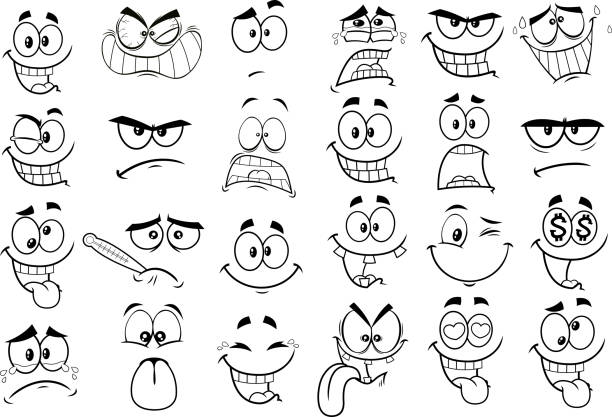Embarking on the journey of character creation, this guide aims to equip beginners with foundational techniques for sketching animated faces. With just a pencil and paper, you’re steps away from turning your imaginative characters into tangible art.
Crafting the Basic Outline
Initiate your design with a fundamental shape, preferably a circle, to form the head. Divide this circle using two intersecting lines—one vertical and one horizontal, placed centrally. This grid serves as a guide for positioning facial features accurately, allowing adjustments in your character’s gaze by altering the intersection point of these lines.
Incorporating Facial Features
Eyes: Windows to Emotion
Position the eyes along the vertical line, starting with two small circles and a dot in each for pupils. The distance between eyes can vary. Experiment with different eye shapes to convey various emotions: angular for anger, wide for surprise, and so forth.
Nose: Adding Character
Introduce the nose slightly below the horizontal line. Its complexity can range from a simple semi-circle to more detailed shapes, with optional nostrils for added realism.
Mouth: Expressing Emotion
Sketch a mouth beneath the nose, ensuring its width is in harmony with the eyes. Altering the mouth’s curve can depict different emotions—upturned for happiness, downturned for sadness, or an oval for shouting.
Ears: Hearing the World
Ears are placed between the eyes and nose level. Begin with a “C” shape and add another inside for detail. Sizes and shapes can vary, from human-like to fantastical.
Experimenting with Facial Expressions
By adjusting the curvature of the mouth and the shape of the eyes, a wide spectrum of expressions can be achieved, enabling your character to communicate without words. This step is crucial for adding depth and personality to your sketches.
Finalizing with Hairstyles
Hairstyles significantly contribute to a character’s identity. Start with the overall shape before adding lines to suggest texture and flow. Consider various lengths and styles to complement your character’s personality.
Comparative Table of Facial Expressions
| Expression | Eye Shape | Mouth Shape |
|---|---|---|
| Joy | Wide, curved up | Wide, upturned |
| Anger | Narrow, slanted | Thin, downturned |
| Surprise | Oval, large | Open, oval |
| Sadness | Half-closed | Small, downturned |
Key Tips for Beginner Sketch Artists
- Practice Regularly: Consistent practice improves skill and confidence;
- Study Real Faces: Observing real human expressions aids in understanding emotional depiction;
- Experiment Freely: Try various styles and shapes to discover your unique style.
Understanding Proportions in Character Design
- Faces are typically five eyes wide;
- Ears align with the eyes and nose;
- Eye spacing should equal one eye width.
Enhancing Your Sketches with Shadows and Highlights
- Shadows: Add depth by shading under the nose, lips, and chin;
- Highlights: Suggest light sources by leaving areas on the forehead, nose, and cheeks lighter.
Conclusion
As we conclude this guide on sketching animated faces, it’s evident that the journey from novice to skilled artist is both challenging and immensely rewarding. The techniques and tips provided herein serve as a foundational roadmap, guiding beginners through the intricate process of bringing animated characters to life. From the initial sketching of basic outlines to the nuanced creation of facial expressions and the final touches of hairstyles, each step is a building block towards mastering the art of character illustration.
The comparative table of facial expressions and the additional sections dedicated to key tips, understanding proportions, and enhancing sketches with shadows and highlights offer a comprehensive toolkit for aspiring artists. These resources are not merely instructions but invitations to explore, experiment, and express oneself through the vibrant world of animation.
Remember, the essence of art lies in practice and persistence. Each stroke brings you closer to developing your unique style and understanding of animated faces. Embrace the learning curve, and let your creativity flourish without bounds. As you continue to sketch, study, and refine your work, the characters you envision will start to take on a life of their own, reflecting the depth of emotion and personality that only art can convey.
In embarking on your artistic journey, keep in mind that every artist was once a beginner. The path to mastery is paved with trials, errors, and triumphs. Let this guide be your starting point, and may your passion for sketching animated faces light your way to countless creations that inspire, entertain, and resonate with viewers across the globe.
